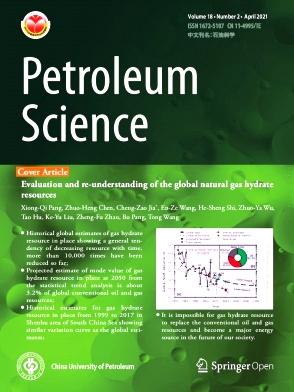Theoretical calculation and analysis of the velocity of shaped charge jet with modified collapse velocity model
IF 6
1区 工程技术
Q2 ENERGY & FUELS
引用次数: 0
Abstract
The application of perforating completion technology in oil and gas field development has gained widespread popularity. Enhancing the efficiency of oil and gas wells relies on increasing the penetration depth, which is influenced by the design of the perforation charge and the strength characteristics of the rock material. However, as a crucial objective function for optimizing perforating charge structures, jet velocity lacks a rapid and accurate calculating method. This article addresses this issue by proposing an improved collapse velocity model using the DP46RDX42-Y perforating charge as a case study. It presents a novel approach for calculating jet velocity based on the unsteady Pugh-Eichelberger-Rostoker (PER) theory. To validate the effectiveness of the proposed method and analyze the impact of different characteristic parameters on jet tip velocity, a series of numerical simulations were conducted using LS-DYNA software combined with Arbitrary Lagrange-Euler (ALE) techniques. Results indicate excellent agreement between the proposed method and the numerical results, demonstrating its superiority over the traditional Gurney formula with an impressive 34.15% increase in accuracy. Notably, this method is particularly suitable for perforating charges with low detonation velocity. Increasing the liner density and decreasing the liner thickness and cone angle is recommended to achieve higher jet tip velocity. Furthermore, the proposed method has the potential for broader application in other perforating charges with varying liner shapes. This study provides a comprehensive and efficient solution for calculating jet velocity, which facilitates optimizing perforating charge structures and calculating penetration depth.
求助全文
约1分钟内获得全文
求助全文
来源期刊

Petroleum Science
地学-地球化学与地球物理
CiteScore
7.70
自引率
16.10%
发文量
311
审稿时长
63 days
期刊介绍:
Petroleum Science is the only English journal in China on petroleum science and technology that is intended for professionals engaged in petroleum science research and technical applications all over the world, as well as the managerial personnel of oil companies. It covers petroleum geology, petroleum geophysics, petroleum engineering, petrochemistry & chemical engineering, petroleum mechanics, and economic management. It aims to introduce the latest results in oil industry research in China, promote cooperation in petroleum science research between China and the rest of the world, and build a bridge for scientific communication between China and the world.
 求助内容:
求助内容: 应助结果提醒方式:
应助结果提醒方式:


